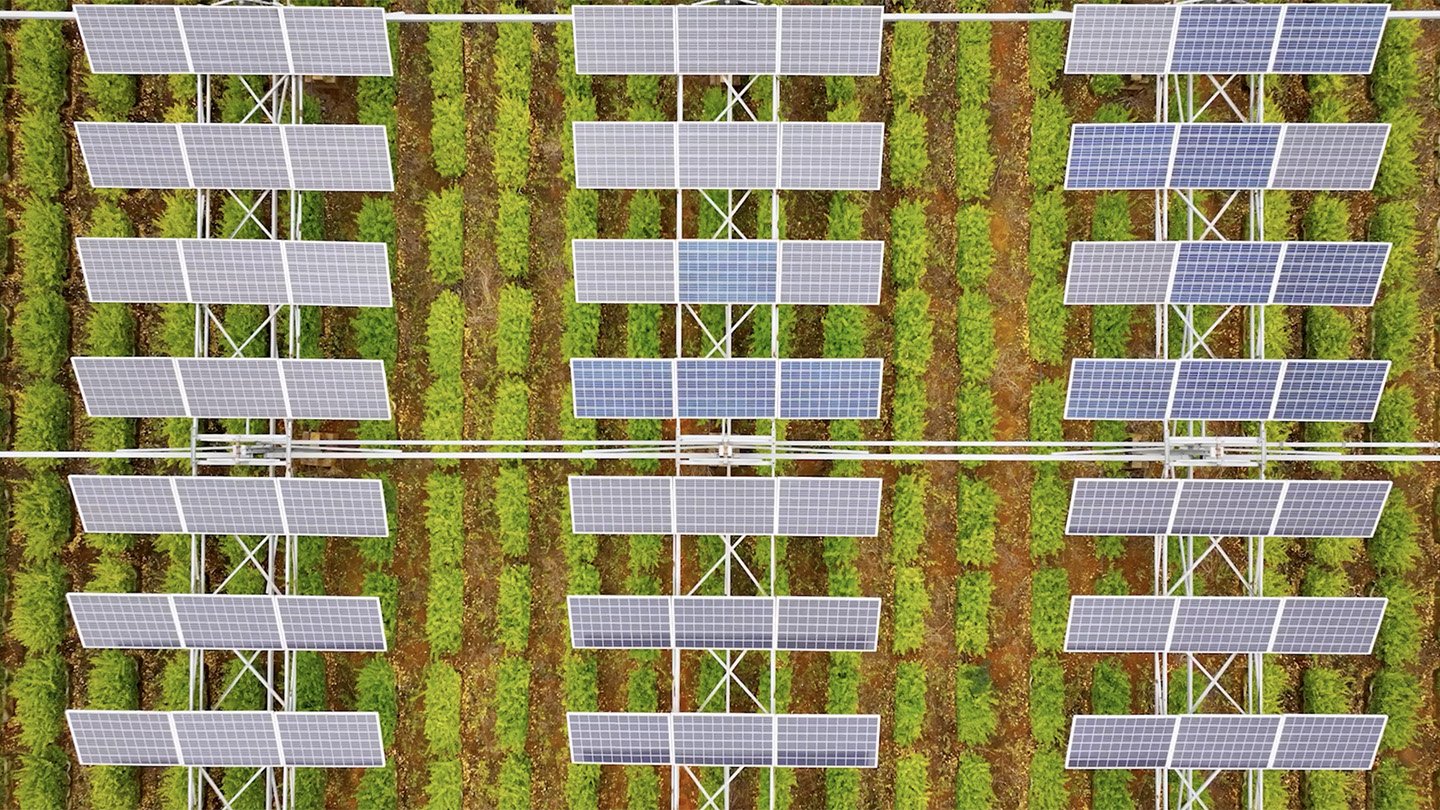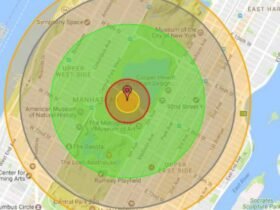
Transcript
James McCall: Solar production in the US really started to pick up around 2012. As solar really became mainstream, there was a lot more concerns of land use changes.
Ravi Sujith: If you look at the type of land that’s been converted for solar installations, over 60 percent of those landscapes are converted croplands.
Chong Seok-Choi: They both require flat areas with a lot of sun, and that’s close to transmission infrastructures. So in this context, it is important for us to figure out how to combine farming and solar power production so that both can exist in harmony.
McCall: Argivoltaics is a term for the colocation of solar and agricultural activities, such as grazing, crop production and also ecological restoration.
Sujith: Argivoltaics has multiple benefits, both for the farmers and for the solar developers.
McCall: If the solar developers can show they are using the land to the highest benefit, they can then access more land to develop more solar. And then the other big one is the farmer and the landowner themselves.
Sujith: Even if you lease out your land for solar development, you can still have an income generating activity like growing crops or sheep grazing.
McCall: There’s also the local communities that stand to benefit from that. It could potentially kind of create a pollinator habitat or prairie restoration.
Seok-Choi: Common practice used to be that people would leave the ground bare for solar construction, but that’s not how it’s done anymore.
Sujith: Covering the land with vegetation, they can avoid erosion and use it as an opportunity for soil carbon restoration.
McCall: Currently in the United States, there are roughly 530 (as of July 2024) argivoltaic sites. It’s a roughly fifty–fifty breakdown between pollinator habitats and solar grazing.
Seok-Choi: Right now, there’s a huge focus on letting sheep graze under solar panels, because they don’t jump on the panels, they don’t like to chew on wires or anything.
Sujith: Integrating the sheep grazing can also improve soil nutrients. So we just completed a five year study in the midwestern U.S. A lot of these areas have high carbon depletion because of intense agriculture. And we actually found that managed sheep grazing can actually improve old carbon and soil nutrients.
McCall: And so if it’s still the same cost as mowing grass and we can provide a benefit both to the local grazer and potentially the environment, why not to make it kind of part of their standard practice.
Sujith: So overall there is kind of an emerging consensus that solar grazing has some value in many of these landscapes. However, there’s a lot of unknowns when you are talking about crop production.
McCall: Of those 570 argivoltaic sites, only 40 are really focused on crop production. And a lot of those sites are these small scale research sites.
Sujith: So the first thing to consider is what crops do better, in what climates or what geographic locations? That’s a critical question, because some crops might do well under shade while some crops have significant yield losses under shade.
McCall: So even two varieties of the same tomato might respond very differently to the kind of microclimate that’s actually created by the solar panels. And then weather patterns are not constant every year. So it’s very hard to make some generalizations for kind of when and where crops would actually be available.
Seok-Choi: But other than that, crop production requires a lot of modification in the engineering and design.
McCall: We actually need to raise the panels high enough so they don’t get shaded or we need to spread the panels a lot further apart to actually get traditional farming equipment through there. Basically, all of the changes that need to occur come at a tradeoff of cost or you’re getting less energy. That is why we are seeing a little more hesitancy in the U.S. market.
McCall: We’re not going to do every system design everywhere, but where and when does this actually make sense, and why would different stakeholders want to do this? As we see climate changes such as reduction in access to water and kind of increased temperatures, that there will be this need to integrate solar. A prime example of this is wine grape production in California, where temperatures are currently too hot to actually produce certain varietals of grapes. And so they’re having to implement shade structures. And so why not also produce solar and make some money off of that shade structure.
McCall: Uhm, there’s also this broader need to grow food much closer to population centers.
Sujith: So currently we are trying to figure out what configurations of argivoltaic systems are suitable for our urban areas. We’ve set up an experimental system at Ambler Campus of Temple University, and which could fit into an abandoned parking lot or something in a city. So the idea is to compare, like how the solar arrays that are affecting these crops in different ways. It might actually improve yields of leafy greens. So we might be able to produce one more cycle of lettuce. But we still need to expand the study to other areas to see how the impacts are different. The next 10 years will be providing a lot of information on different types of integration. That could be applicable to different parts of the world.
Seok-Choi: And that is my dream. Where we can point at a map and say, like if we put panels here, the climate would be altered this way so we could grow this crop.
McCall: So this not a one size fits all pancea solution. It really requires some thought. It really requires a lot of different stakeholders to get their perspective in there. But more solar production can also help achieve climate change goals and so it’s a matter of necessity to make sure that we use this land for its highest benefit.
Source link













Leave a Reply